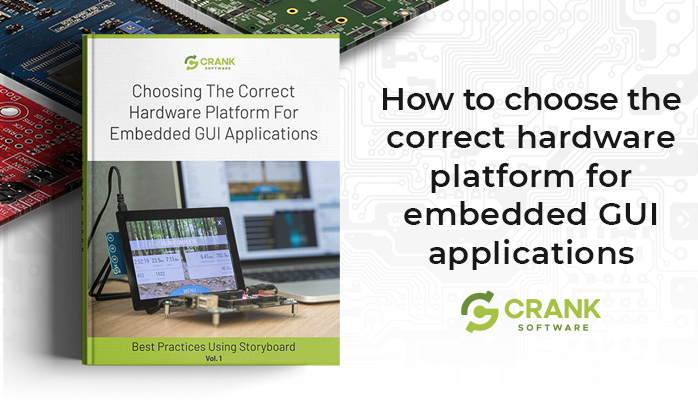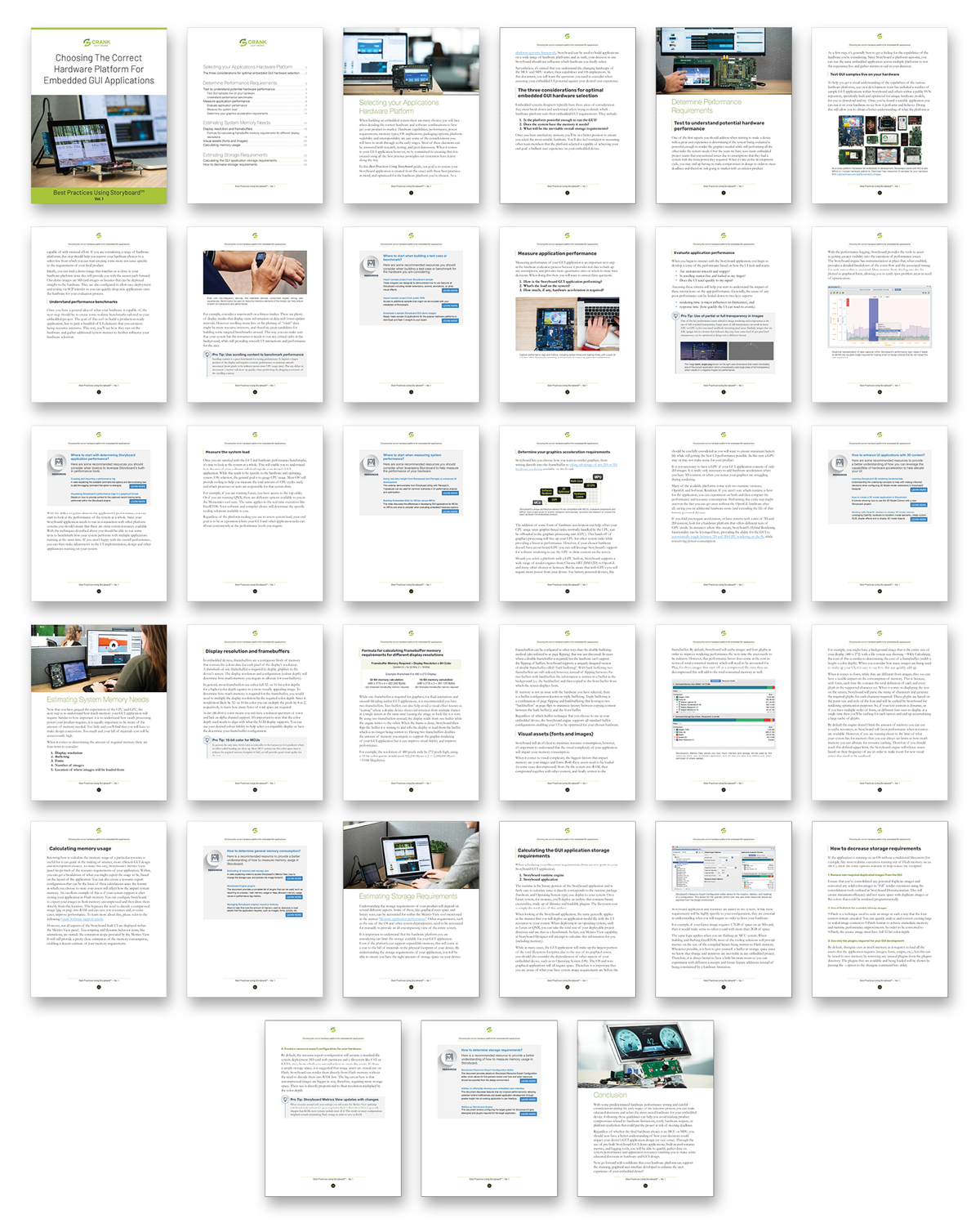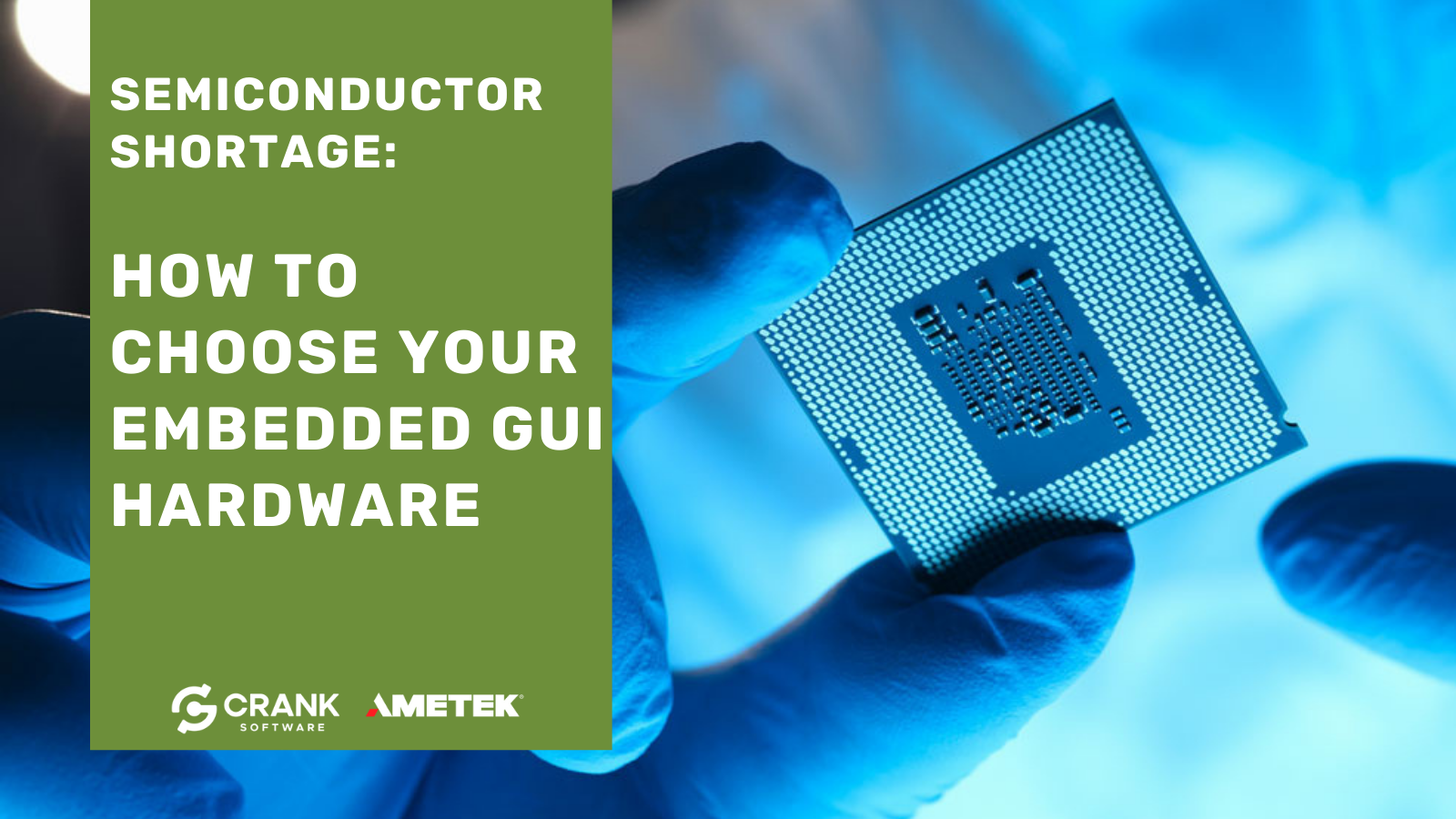
When building an embedded system there are many choices you will face when deciding the correct GUI hardware and software combinations to best get your product to market. On top of vendor features, this year's semiconductor shortage has disrupted supply chains for everything from phones to cars, and forced embedded GUI product teams to rethink their supply chain strategy.
Hardware capabilities, performance, power requirements, memory types, OS implications, packaging options, platform scalability, and interoperability are just some of the considerations you will have to work through in the early stages. Most of these decisions can be answered with research, testing, and peer discussion. When it comes to your GUI application, however, we’re committed to ensuring that it's created using all the best practice principles our customers have learnt along the way.
Adapting to the semiconductor shortage
Before explaining our recommended hardware best practices, it's important to explain how they relate to the current silicon shortage.
Until this year, OEMs counted on their CPU and memory hardware being available when they need it — global demand was nearly $40 billion. Now, we're seeing manufacturers struggle to adapt to the silicon disruption, causing embedded GUI development teams to take steps to change how they procure and develop on these platforms.
This is where the Storyboard embedded GUI development framework helps teams to adapt:
- Updating GUI architecture to decouple the user-facing behavior and logic from the backend, hardware-specific code. Not only does this let you develop the frontend in the absence of a platform, but it isolates the GUI from future changes or disruptions in hardware.
- Transforming GUI development into a true parallel process, where the designers and embedded developers work together on the UX, code, and user validation as early as possible to get the application as mature as possible before integrating with hardware.
- Making use of desktop simulators to prototype, validate, and demonstrate GUI functionality without requiring the hardware platform.
As a platform-agnostic framework, Storyboard is used to build applications on a wide range of hardware platforms and your decision to use Storyboard does not influence the MCU or MPU vendor you finally select.
To assist with understanding the changing landscape of the silicon markets, along with their capabilities and OS implications, we decided to document these considerations for our customers and friends in our this whitepaper, where you'll learn the questions you need to consider when assessing your embedded GUI potential against your desired user experience.
In our downloadable Best Practices Using Storyboard guide, our goal is to ensure your Storyboard application is created from the onset with these best practices in mind, and optimized for the hardware platform you’ve chosen.
The top 3 things to consider for optimal embedded GUI hardware selection
Embedded systems designers typically have three areas of consideration they must break down and understand when trying to decide which hardware platform suits their embedded GUI requirements: They include:
- Is the platform powerful enough to run the GUI?
- Does the system have the memory it needs?
- What will be the inevitable overall storage requirements?
Additionally, consider how your GUI application architecture and development processes should adapt to manage the semiconductor shortage effectively. Will creating a separate GUI layer from the backend have performance impacts? How will your team integrate a more mature GUI application once the silicon becomes available?
Once you have satisfactory answers, you’ll be in a better position to ensure you select the most suitable hardware. You’ll also feel confident in reassuring other team members that the platform selected is capable of achieving your end goal: a brilliant user experience on your embedded device.
This is an excerpt from Crank's whitepaper - Tips for Choosing the Correct Hardware Platform for Embedded GUI Applications, the first Volume of the Best Practices for Storyboard series. Continue reading the whitepaper by downloading it for free here.

.png?width=180&height=67&name=Crank-AMETEK-HZ-Rev%20(4).png)

